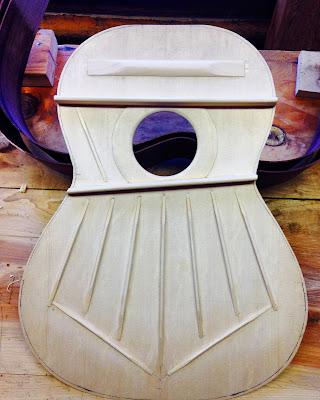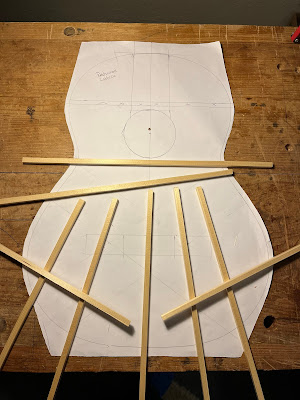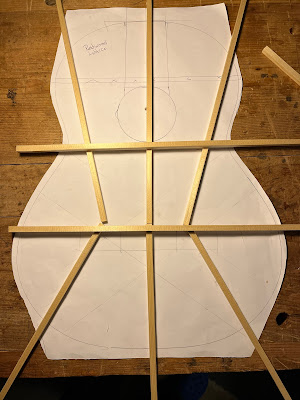Classical Guitar Bracing, Some Thoughts
Our observations have led us to a conclusion that some readers may find surprising: Specific elements of brace design, in and of themselves, are not all that important! One has only to look at the myriad designs employed on great guitars to recognize that there is no design secret that will unlock the door to world-class consistency. A great maker will probably build a great guitar no matter what brace design is used.
William R. Cumpiano, Guitarmaking, Tradition and Technology, 1987
There are many opinions among classical guitar makers and guitarists, especially the guitarists, on how a classical guitar top should be braced. The guitar makers base their opinions upon their experience using different patterns, and most guitarists opinions are based upon guitars that have played or what they have been told by a maker with a desire to sell more of his or her guitars.
So, what bracing pattern is best? An Antonio de Torres Jurado style seven strut fan brace? A Greg Smallman style lattice bracing? Maybe a Simon Marty style? The “falcate” (think sickle shape) style bracing is very much in vogue these days, will it make the best sounding guitar? Just Google all those styles and you will see a plethora of photos on the internet of those styles and someone will say it is the very best way to brace a guitar top. Some makers are very secretive about how they brace their guitars, they don’t want any one stealing their secrets. There are no “secrets” in guitar making and I am willing to share some of my secret knowledge on top bracing.
The guitar maker is the one who gives the guitar a voice and will use the bracing pattern that suits their aesthetic values best. I personally have tried at least a dozen bracing styles and only three of the patterns, for me, produce great sounding guitars. The patterns that worked pleased my aesthetic and architectural (mechanical) sense and most importantly they worked with the wood I chose.
This first example is text book copy of a 1960’s Hernandez y Aguado on a spruce top that was paired with ziricote back and sides, this was an absolutely phenomenal guitar! Crystal clear voice that easily carries to fill a 500 seat venue.
This pattern was used by Domingo Esteso on a smaller bodied guitar he built in the 1920’s, and I built a close copy of that guitar using the same bracing. It’s voice is as loud as any full size guitar and has an incredible tone palette!
This pattern is what I used to make a guitar with a bearclaw Sitka Spruce top with granadillo back and sides and this guitar is LOUD! This pattern was used by the great Santos Hernandez.
This is a variation on the Hernandez y Aguado bracing pattern, it didn’t work the way I wanted, not a lot of volume, but it had a sweet voice. So I removed that top…


















Comments
Post a Comment